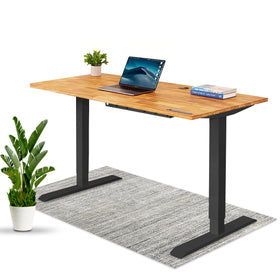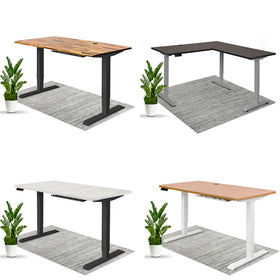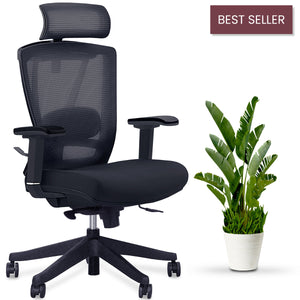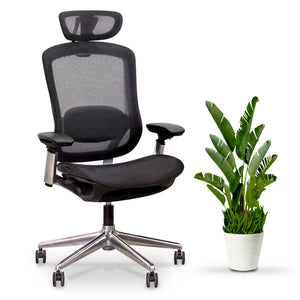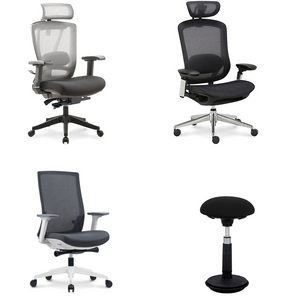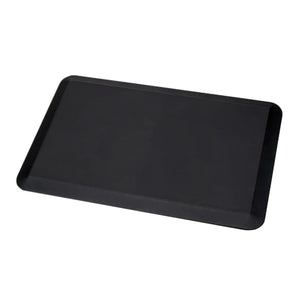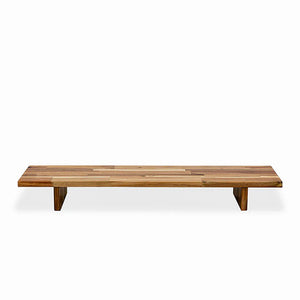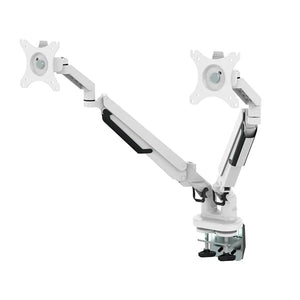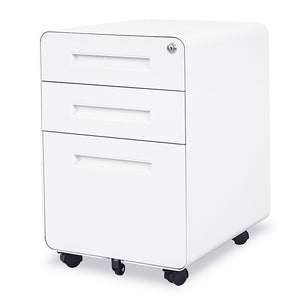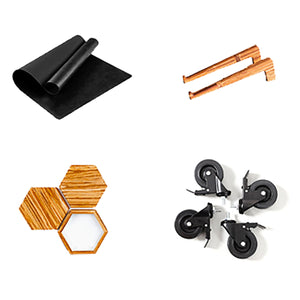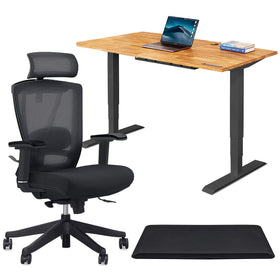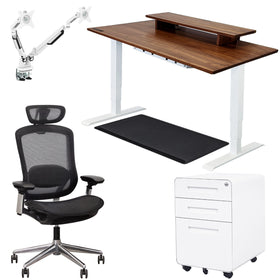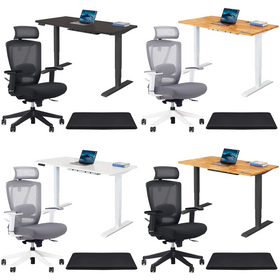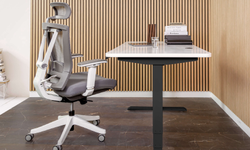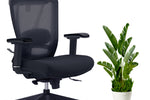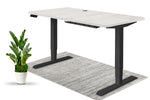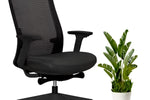-
Top Best Standing Desks for a Short Person April 28, 2024
-
Perfect Ergonomic Workspace for Creatives April 24, 2024
-
Future of Office Furniture: Sustainable Designs April 19, 2024
-
Leather vs Mesh Office Chairs: The Pros and Cons April 11, 2024
-
AeryChair - Ergonomic Chair530 CAD
-
Standing Office DeskFrom835 CAD
-
GrinChair - Ergonomic Chair380 CAD
-
Home Office Standing DeskFrom715 CAD
Future of Office Furniture: Sustainable Designs
The movement towards sustainable design has gained traction in just about every industry. From fashion to architecture, consumers and manufacturers are starting to prioritize environmental responsibility in their materials and production methods as opposed to focusing merely on profit. Office furniture is no exception to this new way of thinking, especially because of the severe ecological impact of traditional furniture-making, which is to blame for extensive deforestation and waste.
Sustainable furniture focuses on using materials that are renewable, recycled, or upcycled, such as bamboo, reclaimed wood, and recycled metals and plastics. Additionally, sustainable practices include minimizing chemical use, reducing carbon footprints through local manufacturing, and designing furniture to last longer or be easily recyclable at the end of its lifecycle. The future of office furniture will revolve around the protection of natural resources and minimizing waste. That said, designers know that most professionals are not willing to compromise on the aesthetic appeal of workspaces; in other words - shoppers can still expect plenty of stylish options to choose from.
At EFFYDESK, we’ve adopted an environmentally friendly approach to our ergonomic furniture. Products like our TerraDesk, made from thousands of recycled chopsticks make it possible to upgrade your workflow while helping the planet. Continue reading to learn everything you need to know about the office furniture of the future.
The Need for Sustainable Office Furniture
Most traditional office furniture is created using cheap, man-made materials that are difficult to recycle and consume a lot of energy in the production process. This is finally changing, and there are a few different factors that we have to thank:
Environmental Impact: The furniture industry plays a major role in environmental degradation, leading to deforestation, waste, and harmful greenhouse gas emissions. Sustainable office furniture aims to tackle these issues by using eco-friendlier materials and more energy-efficient manufacturing methods. These practices help cut down our ecological footprint and contribute to a healthier planet.
Corporate Responsibility: Corporations are under more pressure than ever to account for their ecological impact. By sourcing furniture in sustainable ways, businesses can boost their public image and show a real commitment to corporate social responsibility. This not only lines up with today's ethical standards but also resonates with a growing number of consumers who care about the environment.
Cost-Efficiency: In the long run, investing in sustainable and durable office furniture is by far the best financial move for businesses. Longer-lasting furniture means fewer replacements and cost savings. Also, being able to recycle or repurpose furniture when it's time to upgrade adds value and cuts down costs in waste management and materials. This is a win-win for lowering business expenses and promoting a circular economy.
Innovations in Sustainable Office Furniture Design
The sustainable design of office furniture revolves around three main ideas: first, using innovative materials that are better for the environment; second, refining production processes to be more efficient and less harmful; and third, managing the furniture's end-of-life cycle in a way that maximizes recycling and minimizes waste. By focusing on these aspects, the design of office furniture can be both eco-friendly and forward-thinking, aiming to reduce environmental impact at every stage.
Material Innovation
Recycled Materials: The sustainable furniture movement is really getting behind the use of recycled materials, with more and more designers turning to recycled plastics, metals, and reclaimed wood for their projects. This strategy helps keep waste out of landfills and cuts down on the need for new, raw materials, which usually come with a heavy environmental price due to extraction and processing. Plus, recycled materials often maintain the look and functionality of their original forms, making them a smart and environmentally friendly option for contemporary furniture design.
Renewable Resources: Renewable resources are another important part of designing sustainable furniture. Materials like bamboo, cork, and sustainably sourced wood are industry favourites due to their low environmental impact. Out of these options, bamboo is considered the gold standard because of how fast it grows and it’s ability to sequester carbon. However, other choices like cork, harvested from the bark of cork oak trees without harming the tree, along with sustainably sourced wood, certified by organizations like the Forest Stewardship Council (FSC), also do a great job of keeping their environmental impact to a minimum.
Biodegradable Materials: Recently, a lot of companies have started focusing more on biodegradable materials in their furniture design. Bioplastics, derived from natural materials such as corn starch, and natural fibers like wool and cotton, are designed to break down over time and reduce the long-term waste footprint. This is great for products like office chairs that require cushioning and other elements aside from wood. These materials can be composted or decomposed naturally as opposed to a lot of the synthetic materials we see in traditional office furniture.
Production Processes
The method of manufacturing also plays a crucial role in the sustainability of office furniture.
Energy Efficiency: Manufacturers are beginning to utilize renewable energy sources like solar and wind power, to power their production lines.
Reduction of Chemicals: The move away from volatile organic compounds (VOCs) and harmful chemicals in finishes and glues is helping office furniture producers to reduce indoor air pollution and environmental damage.
Modular Design: Furniture designed to be easily disassembled encourages customers to take their furniture apart and recycle it properly when they are done using it.
End-of-Life Cycle Management
Designing office furniture while keeping the end of its life cycle in mind is essential for sustainability:
Recyclability: The onus is on furniture companies to make recycling as simple and convenient as possible. This involves selling products where materials can be separated at the end of their life cycle and reused.
Take-Back Programs: Some companies offer programs to take back used furniture, refurbish it, and either resell it or donate it, which is by far the most straightforward recycling method.Challenges and Opportunities
While the trend towards sustainable office furniture is something to get excited about, there are a few challenges to keep in mind. The cost of sustainable materials and new technologies can be higher, which means consumers often have to pay a higher price for eco-friendly furniture. However, as demand increases and technologies become more mainstream, prices are likely to decrease.
Moreover, educating consumers and companies about the benefits of sustainable furniture is absolutely crucial. Many are aware of general environmental issues, but lack an understanding of the specific benefits like reduced toxicity, greater durability, and end-of-life recyclability. Spreading awareness can change the way people buy and sell.
The Future of Office Furniture
The future of office furniture looks green. With advancements in technology and creative use of materials, along with increasing support from lawmakers and consumer demand, the shift towards sustainability is gaining momentum. We can expect to see more innovative designs, further closing the loop on sustainability in the workplace.
Additionally, the role of digital technology in promoting sustainable practices in the furniture industry is more powerful than most people realize. From augmented reality (AR) to help visualize furniture in office spaces to platforms that facilitate the recycling and resale of used furniture, technology will continue to push forward the creation and sale of eco-friendly office furniture.
Overall, the shift towards sustainable office furniture is not just about environmental responsibility but also about embracing a host of benefits for both businesses and consumers. As we move forward, sustainable practices in the office furniture industry will likely become the standard, rather than the exception. EFFYDESK is proud to be a part of this new wave of office furniture. Explore our selection of products to learn more.







